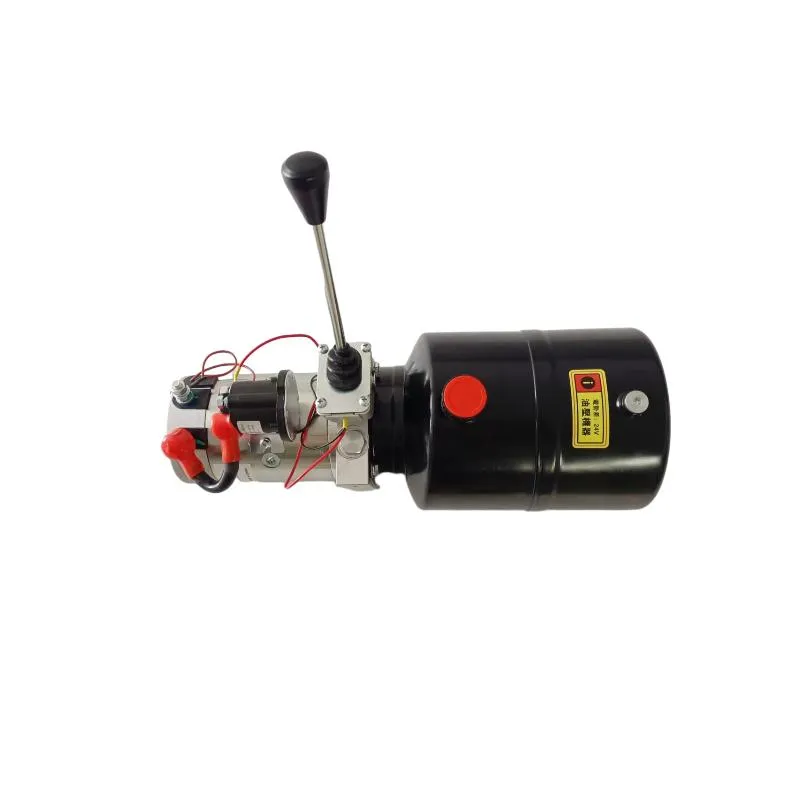nov. . 16, 2024 17:26 Back to list
Understanding Hydraulic Cylinder Force Outputs and Applications in Various Industries
Understanding Force in Hydraulic Cylinders The Power Behind Hydraulic Systems
Hydraulic cylinders are the backbone of many industrial and construction applications, providing the force necessary for various operations. Understanding the force generated in hydraulic cylinders is crucial for engineers and operators alike, as it directly affects the efficiency, safety, and performance of machinery.
What is a Hydraulic Cylinder?
At its core, a hydraulic cylinder is a mechanical actuator that utilizes incompressible fluid to produce linear motion. It consists of a cylindrical barrel, a piston, and a rod. When hydraulic fluid is pumped into the cylinder, it pushes the piston, extending or retracting the rod. This simple yet effective design allows for powerful and controlled movements.
Calculating Force in a Hydraulic Cylinder
The force exerted by a hydraulic cylinder can be determined using Pascal's law, which states that pressure applied to a confined fluid is transmitted undiminished throughout the fluid
. The formula to calculate force in a hydraulic cylinder is\[ \text{Force} (F) = \text{Pressure} (P) \times \text{Area} (A) \]
Where - \( F \) is the force in pounds or Newtons, - \( P \) is the pressure in pounds per square inch (psi) or Pascals (Pa), - \( A \) is the cross-sectional area of the piston in square inches or square meters.
force in hydraulic cylinder product

By manipulating the pressure and the area of the piston, engineers can design hydraulic systems that meet specific force requirements. For instance, a larger piston area translates to a greater force output at the same pressure, making it suitable for heavy lifting applications.
Applications of Hydraulic Cylinders
Hydraulic cylinders are ubiquitous in various industries, including construction, agriculture, manufacturing, and automotive. Their ability to generate significant force in a compact package means they are ideal for applications such as lifting heavy loads, pressing materials, and moving machinery parts.
Consider hydraulic excavators, which utilize multiple hydraulic cylinders to operate the boom, bucket, and swing mechanism. The precise control of force in these cylinders allows for delicate movements as well as massive lifting capabilities, showcasing the versatility of hydraulic systems.
Safety Considerations
While hydraulic cylinders are powerful tools, they must be handled with care. Overloading a cylinder beyond its force capacity can lead to failure, resulting in equipment damage or personal injury. It is essential to follow the manufacturer's specifications and regularly maintain hydraulic systems to ensure they operate safely and effectively.
Conclusion
The understanding of force in hydraulic cylinders is fundamental to the design and operation of hydraulic systems. By applying the principles of fluid mechanics, engineers can develop solutions that harness the immense power of hydraulics. As industries continue to evolve, the role of hydraulic cylinders will remain vital, driving innovation in efficiency and performance. Whether in construction, manufacturing, or any number of applications, hydraulic cylinders exemplify the strength and precision that modern engineering can achieve.
-
High-Performance Set of 50/60-45-290 471 | Durable & Reliable Components
NewsAug.26,2025
-
Efficient Pallet Truck Power Units - Reliable Hydraulic Systems
NewsAug.25,2025
-
Premium Set of 50/60-45-290 471 Parts | High Performance
NewsAug.24,2025
-
Efficient & Reliable Double Acting Power Unit | Hydraulic Solutions
NewsAug.23,2025
-
1.5 Ton Turbocharged Cylinder 80/95-40/60-35-124 | High Performance
NewsAug.22,2025
-
High-Performance Fork Lift Hydraulic Power Units
NewsAug.21,2025
